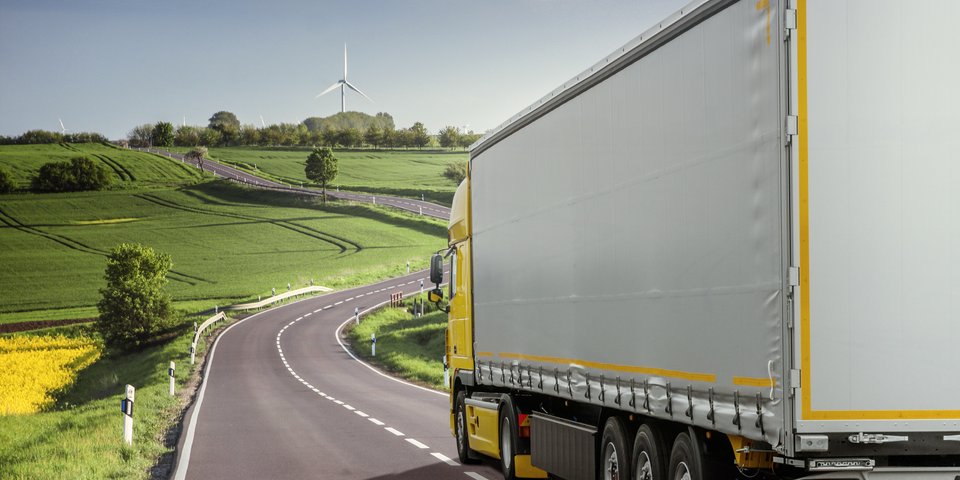 iStockphoto/paulbranding
iStockphoto/paulbrandingTurn Assist saves lives
Vision Zero – the EU wants to reduce the number of people killed in road accidents to almost zero by 2050.
FL/SW – 09/2018
There are still too many people who lose their lives on European roads. According to the Commission, there were 25,000 fatalities and 135,000 serious injuries on European roads in 2017. Around 40% of road accidents occur in cities. It is often vulnerable road users, such as pedestrians or cyclists, that are harmed.
The Commission is continuing to pursue the goal of Vision Zero, that is, almost zero fatalities or serious injuries by 2050. Modern solutions, such as Turn Assist systems for trucks, can help. In the future, motor vehicles within the EU should be equipped with Turn Assist systems, especially to protect pedestrians and cyclists.
In May 2018, the EU Commission published the third part of its ‘Europe on the Move’ package, which also contains a proposal for a Regulation on the protection of pedestrians and the safety of vehicles. Safe mobility will be ensured by advanced systems, such as Turn Assist systems.
The proposal for a Regulation stipulates that trucks and buses must be equipped with a detection and warning system for vulnerable road users located in the immediate vicinity of the front and passenger side of the vehicle, and that their design and construction improve visibility of vulnerable road users from the driver’s seat.
Lifesaver or technical gimmick?
However, the Commission’s proposal does not provide for the modification of emergency braking systems for trucks and buses to automatically brake upon detection of vulnerable road users, as is proposed for passenger cars and light commercial vehicles.
According to the European Commission, drivers should still be able to brake in an emergency themselves and this should not be activated automatically by the Turn Assist system. The accident analysis on which the initiative is based has shown that there are currently no systems that effectively prevent vulnerable road users being run over at low speed, as is the case for turning. The Commission also notes that it is uncertain if and when such systems will be available.
Therefore, the Commission considers it more beneficial to improve mirrors, windscreens and side windows so that no blind spots are created and there is eye contact with pedestrians and cyclists. However, the Commission also states that, if the technical conditions change, the scheme should be adapted to technical progress.
Dr Walter Eichendorf, President of the German Road Safety Council (DVR) and Deputy Director General of the German Social Accident Insurance (DGUV) explains in the current edition of DGUV Kompakt that Turn Assist systems use ‘radar, ultrasound, cameras or a combination of these’ to recognise other road users, particularly pedestrians and cyclists, when turning and to warn the driver of a truck. This requires comprehensive software for reliable image recognition, especially to prevent false warnings. The Commission's Third Mobility Package provides for the mandatory installation of Turn Assist systems for vehicles over 3.5 tonnes, but only for new models from 2022 and for all commercial vehicles from 2024 onwards.
Background
In July, Federal Transport Minister Andreas Scheuer launched the ‘Turn Assist Initiative’. He wants to see the introduction of Turn Assist systems earlier than 2022, as stipulated in the Commission’s proposal. According to the Federal Association for Road Haulage, Logistics and Disposal (BGL), there are currently no truck manufacturers that offer an electronic Turn Assist system that can automatically brake in the event of danger. Putting legislation into place would increase pressure on manufacturers and save lives.
In its November 2017 resolution on ‘boosting car safety in the EU’, the European Parliament called on the Commission to make it mandatory to install automatic emergency brake assistants which recognise pedestrians, cyclists, light powered two-wheelers and motorcyclists in all cars, light commercial vehicles, buses and trucks because these have a strong potential to prevent road accidents by means of autonomous powerful braking and shorter stopping distances. Trucks are involved in 15% of fatal road accidents and approximately 1,000 vulnerable road users die in truck-related accidents every year. The Commission is being calling on to accelerate the introduction of ambitious differentiated direct vision standards, intelligent speed assistance systems and automatic emergency braking systems with cyclist and pedestrian detection.
